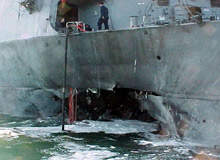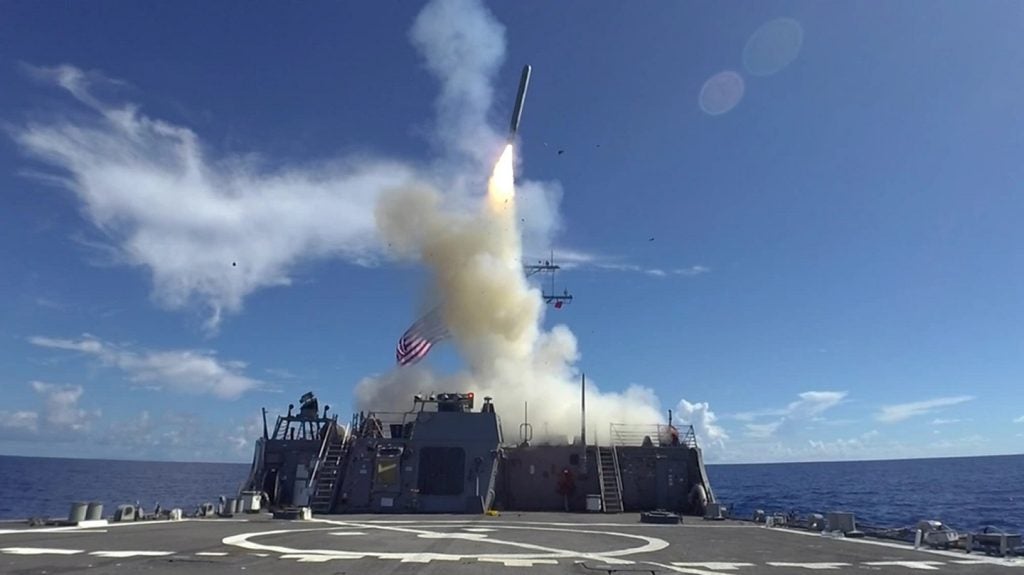
Waterside security (WSS) is one of the most complex and challenging operational issues for modern navies in the current turbulent global political climate. The growing priority of this issue is reflected in the steadily increasing expenditure on activities in this sphere by many nations around the world.
Although the nature of many of today’s threats remains largely unchanged from those established during the Second World War – hostile frogmen, piloted submarine devices and explosive motor boats – the theatre in which they operate is, unquestionably, entirely different.
Establishing physical exclusion barriers in time of conventional war is one thing; protecting vulnerable assets, infrastructure and lives from asymmetric attack, particularly in brown-water environments, is quite another.
Naval bases typically share their approaches with a myriad of commercial traffic, leisure vessels, fishing and small coastal boats, while replenishment logistics mandate the movement of a further plethora of diverse support craft.
How well do you really know your competitors?
Access the most comprehensive Company Profiles on the market, powered by GlobalData. Save hours of research. Gain competitive edge.

Thank you!
Your download email will arrive shortly
Not ready to buy yet? Download a free sample
We are confident about the unique quality of our Company Profiles. However, we want you to make the most beneficial decision for your business, so we offer a free sample that you can download by submitting the below form
By GlobalDataDiscerning friend from foe in busy littoral waters is both difficult and, by virtue of the short window available to implement appropriate countermeasures, unforgiving. Add to this the importance of sea transports to the economies of a huge number of countries – including those with no seaboard of their own – and the fact that even blue-water fleets must, at some point, enter harbour, and the importance of waterside security becomes clear.
See Also:
The underwater menace
The vulnerability of ships at anchor and key infrastructure elements to covert underwater attack was one aspect of the threat to maritime security amply demonstrated during the Second World War. Today, the ready availability of diving equipment for recreational use makes the clandestine swimmer one of the most problematic threats to counter effectively, while continuing advances in technology make even initial detection increasingly difficult.
The rise of the ‘rebreather’ – designed to extend dive-times by stripping the CO2 from exhaled air to allow it to be reused – means fewer bubbles than a conventional scuba-kit, which now enables divers to be quieter in the water and interact more freely with marine wildlife. It also, inevitably, allows an incoming hostile to make a far less conspicuous approach.
Equally, it is hard to see how ongoing innovation and improvements in mini-submersibles, principally aimed at driving down the cost of highly manoeuvrable craft for marine scientists and researchers, can avoid potentially providing terrorists with a devastating weapon.
Above-water dangers
As the US Navy was brutally reminded by the attack on the USS Cole in Aden Harbour on 12 October 2000, which left 17 sailors dead and 39 injured, the threat of improvised surface weapons such as, in this case, the explosive motor boat (EMB), cannot be ignored.
In busy coastal waterways, many small craft will innocently have to make close approaches to potential targets, providing a loophole of legitimacy which leaves naval vessels particularly open to attack by presumed friends, especially in foreign waters. With any boat that can make 30kt capable of closing at a rate of 50ft a second, there is precious little time for any force, no matter how well trained or equipped, to mount much in the way of a response.
The nature of waterside security
The demands of WSS are exacting, requiring effective surveillance to detect incursions from the air, the surface and underwater, accurate determination and characterisation of the threat, the provision of suitable deterrence and, ultimately, the launch of an appropriate neutralising response. Moreover, it is inevitable that not all such intrusions will represent a directed threat, so any security system needs to be flexible enough to discriminate between the inadvertent, the deliberate but non-malicious and those with hostile intent.
Achieving this level of sophistication calls for a multi-dimensional approach, mixing intelligent systems technology with human oversight to ensure a suitable response.
Detection, deterrence and denial are the essential ingredients for effective WSS – key elements which must function at sufficient range to provide the necessary response time and the capability to deliver accurate and appropriate countermeasures. This in turn demands the integration of the inherent inter-disciplinary factors of command and control systems, surveillance and sensor technology, deterrent responses and finally, non-lethal and lethal denial to achieve this goal.
Primary deterrence can be enhanced by a conspicuous command presence – patrol boats, floating barriers and visible security measures – intending to reinforce the message that the vessel or site is a ‘hard’ target.
The continuum of force logically extends next into the ability to issue effective verbal warnings – below water as much as above – and ends by backing them up with non-lethal and, ultimately, lethal force.
A measured escalation of this kind is likely to be of very limited use against suicide attacks, but failure to comply with warnings may also indicate nothing more sinister than a simple language-barrier.
This inescapably demands a higher moral stance of the defending navy than is likely to be exhibited by an ideologically motivated adversary; justifying the use of lethal force is difficult in the absence of incontrovertible evidence of hostile intent.
Evolving solutions
Floating barriers and nets to establish an exclusion zone will always provide a degree of defence against both surface and subsurface attack, but their use may not always be possible. Unsurprisingly, a significant part of the ongoing research is directed to systems which will protect where such physical measures cannot.
A range of detection approaches have been suggested for underwater interdiction, including thermal imaging and millimetre waves systems, but to date sonar technologies have proven most effective in this role. Although conventional passive sonar exhibits variable results when it comes to detecting incoming divers, advances in artificial intelligence and the rise of neural networking have enabled the development of a number of specialised active detection systems.
One approach to underwater protection which has reached an advanced state is the Integrated Swimmer Defense (ISD), a project developed by the US Navy with a consortium of industry partners. ISD is intended to provide unprecedented security for vessels both when moored in US harbours and during expeditionary operations and combines active sonar with radar and electro-optics / infrared – integrating software linking real-time data-sets to provide optimum speed and accuracy of detection. The system ultimately employs a non-lethal approach to deterrence / denial – an underwater air gun, which has been described as giving unwelcome divers ‘a good thump’. Unveiled in August 2008, the system is currently deployed for evaluation.
While the use of trained dolphins and sea lions, combat swimmers, remotely operated vehicles (ROVs) and autonomous underwater vehicles (AUVs) may also play their part in a multifaceted response to underwater attack, the above-water threat of the EMB remains an especially intractable one. However, technology recently developed for US onshore combat operations may ultimately hold the key to solving it. The system – Navy expeditionary over-watch – includes an unmanned aircraft and a highly equipped Humvee fighting vehicle but it is the robot boat that offers the most potential for WSS applications.
Intended to intercept unauthorised surface craft entering an area, the boat has long-range radio to allow two-way communication between the distant sailors and the crew of the intercepted boat. It is also equipped with a non-lethal acoustic deterrent and an onboard gun, should the intruder’s intentions warrant more direct action. If this element in particular proves as operationally effective as expected, it could herald a time when even the most determined water-borne suicide bomber can be indicted at a safe distance, with no danger to personnel.
Recent French experiences during operations in Lebanon and the Indian Ocean have reinforced the evidence that asymmetric threats are increasing within littoral areas; the enduring problem is that they are diffuse in their instigation, yet trans-national in their effect. As the EU’s special programme on security – part of the 7th Framework Programme – reflects, countering them will call for codified procedures for the exchange of information on an international level.







